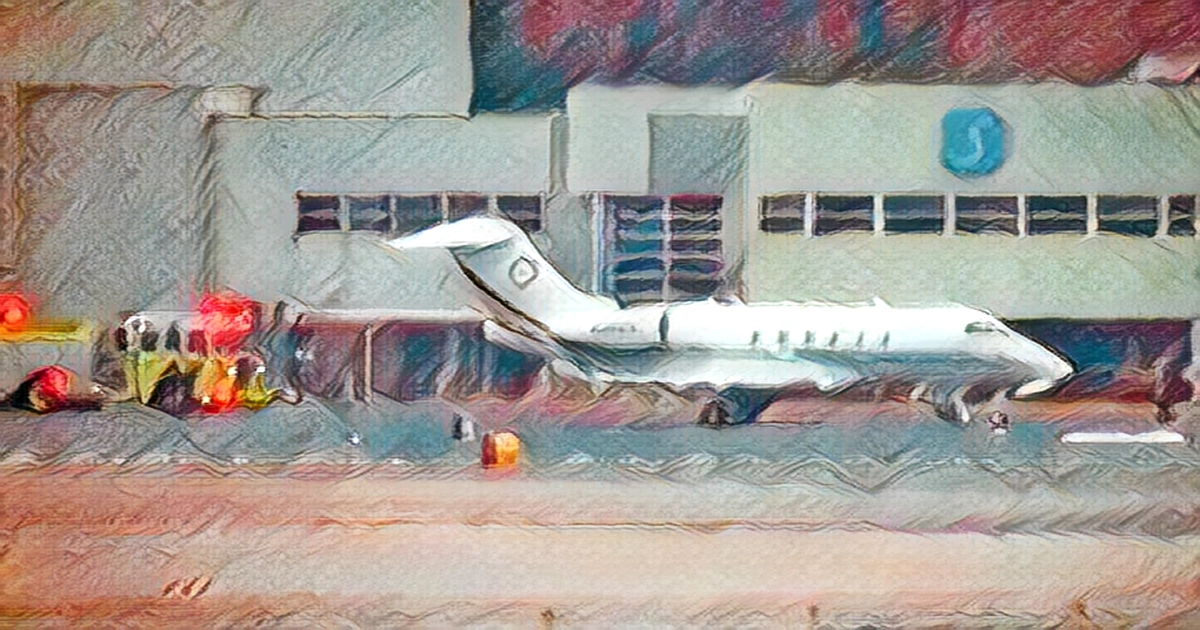
HARTFORD, Conn. - A business jet over New England violently pitched upward and fatally injuring a passenger after pilots responding to automated cockpit warnings switched off a system that helps keep the aircraft stable, U.S. transportation investigators reported Friday.
The National Transportation Safety Board didn't reach any conclusions in its preliminary report on the main cause of the deadly March 3 accident, but it described a series of things that went wrong before and after the plane swooped out of control.
The report said that pilots followed a checklist and turned off a switch that trims or adjusts the stabilizer on the plane's tail when confronted with several alerts in the cockpit of the Bombardier jet.
The report said that the nose of the plane swept upward, subjecting the people inside to forces about four times the force of gravity, then pointed lower before turning upward before pilots could regain control.
Pilots told investigators they did not encounter turbulence, as the NTSB had said in an initial assessment the day after the incident.
The trim system of the Bombardier Challenger 300 twin-engine jet was the subject of a Federal Aviation Administration mandate last year that pilots conduct extra safety checks before flights.
Bombardier did not respond directly to the report's contents, but said in a statement that it was carefully studying it. The Canadian manufacturer said it stood behind its Challenger 300 jets and their airworthiness in a previous statement.
The company said on Friday that they will continue to support and provide assistance to all authorities as needed.
The two pilots and three passengers were traveling from Keene, New Hampshire to Leesburg, Virginia before they were transferred to Bradley International Airport in Connecticut. One passenger, Dana Hyde, 55, of Cabin John, Maryland, died of blunt-force injuries.
In government positions during the Clinton and Obama administrations, Hyde was a counsel to the 9-11 Commission, formally known as the National Commission on Terrorist Attacks Upon the United States.
It was not clear whether Hyde was in her seat or up and about, in the cabin of the jet owned by Conexon, based in Kansas City, Missouri. Her husband and her son, along with the pilot and co-pilot, were not injured in the incident, the report said.
A Conexon specializing in rural internet service, a company that doesn't want to comment Friday, hasn't responded to a request for comment.
The pilots canceled their initial takeoff because no one removed a plastic cover from one of the exterior tubes that determine airspeed, and they took off with a rudder limiter fault alert on, according to the report.
Autopilot stabilizer trim failed, according to another warning. The report said the plane abruptly pitched upward as the pilots moved the stabilizer trim switch from primary to off while working through procedures on a checklist.
The report said that the plane was in danger of an aerodynamic stall because of the violent oscillation of the plane up and down and the stick pusher activated.
John Cox, a former airline pilot and now a safety consultant, said there were definitely issues with the pilots pre-flight actions, but he said that they reacted correctly when they followed the checklist for responding to trim failure.
The flight crew consisted of two experienced pilots with 5,000 and 8,000 hours of flying time, and held ratings needed to fly for an airline. Both were relatively new to the model of aircraft, earning their ratings last October.
The FAA issued its directive about Bombardier Challenger 300 jets last year after several instances in which the horizontal stabilizer on the aircrafts caused the nose of the plane to turn down after the pilot tried to make the aircraft climb.
